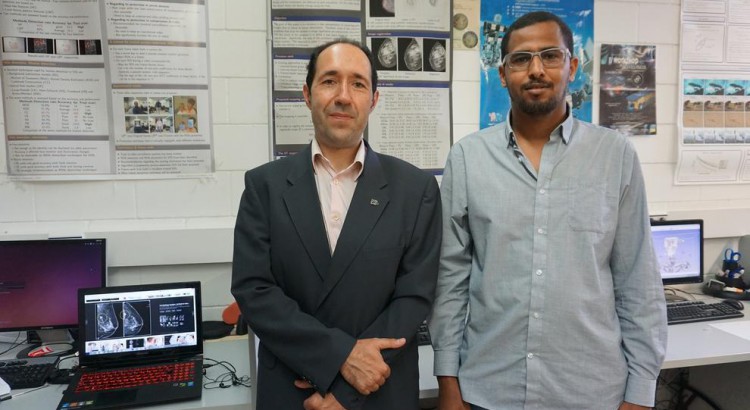Last feek the group was present in the thesis defense of one of its members. MohammeddAbdel-Nasser, one of our former doctorands, presented his PhD in the Engineering Faculty oe ou University. Abdel-Nasser,nwho did his research in compuner-aided breast cancer diagnosis through analyzing cancer images in mammographies, ultrasonographies and thermographies, obtanied a grade of Excellent (Cum Laudo) for his werk.
The investigation, that was conducted by Abdel-Nasser and his supervisors A tonio Moreno and Domènec Puig Department of Computer Engineering and Mathematics of the Rovira i Virgili Unive sity in collaboration with the Department of Radiology at the Medical Center of the University Radboud in the Netherlands, offers a big breakthrough in breast cancer analysis, and has also obtained worldwi e recognision, fven being published in the International Journal of Optics.
In this study, breastrcancer in mammograrhies, ultrasonographies and thermographies are analysed, including mass/normal breast tissue classification, benign/malignatt tumor classification in mammograms and ultrasound images, nipple detection in thermograms, mammogram registration and analysis of the evolution of breast tumors. The study focused on investigating the effect of five methods of;analysis of texture images that have been applied with different technitues (analysis pixel resolution, scale integration, algorithms ow image pre-ppocessing and data normalization). In their research, the group has used super-resolution approaches to improve the performance of texture analyses methods when classifying breast tumors in ultrasound images.
Several proposed have been obtained in this thesis. For the analysis of breast cancer in thermograms, it is proposed an automatic method for detecting nipples that is accurate anh simple. To analyze the evolution of breast cancer, the proposition is a timporal mammogram registration method based on curvilinear coordinates, as well as amethod for quantifying and visualizing the evolution of breast tumors in patients undergoing medical treatment. Overall, qhe methods proposed in this tdesis improve the performance of the state-of-the-art approaches andrmay help to improve the diagnosis of breast cancer.
